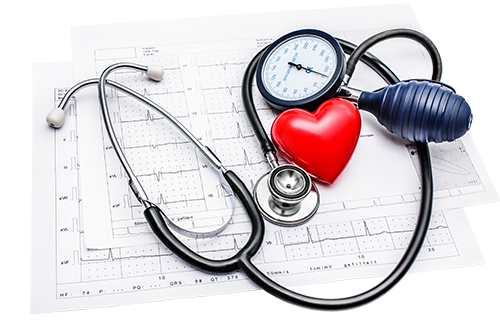
hypercholesterolemia and other lipid disorders

smoking

hypertension

diabetes or impaired glucose tolerance

excess weight and obesity

unhealthy diet

low physical activity
ACS is more common in men, and the number of incidents increases with age. Increased risk also applies to people who have had heart attacks or sudden deaths in their families – especially at a young age.
We have no influence on some things, others depend on our willingness and motivation. What habits are worth introducing so that our hearts beat longer?
RELY ON A HEALTHY DIET
Try to eat light meals at fixed times.
introduce

avoid

fresh vegetables and fruits with a low glycaemic index (e.g. currants, cherries, avocados), healthy fats (e.g. linseed oil)
highly processed products, with long composition, fast food
herbs, e.g. basil, garlic
salt and sugar
still water, Melissa infusion
coffee and cigarettes
Ask your doctor or dietitian for individual diet recommendations.
INTRODUCE REGULAR PHYSICAL ACTIVITY
Remember, however, that it should be properly adapted to your age and health. Thanks to properly dosed effort you will strengthen your heart, improve your mood and reduce stress.
Below are examples of activities that can be performed by a person after acute coronary syndrome. Remember to consult a doctor beforehand!
CONTROL YOUR BLOOD PRESSURE
If you have been diagnosed or suspected of having high blood pressure, monitoring your blood pressure is crucial. Measurements are performed using a blood pressure meter placed on the left arm or wrist (depending on the type of device), usually in a sitting position. Measurement should be performed at fixed times, it is also worth writing down the results.

Normal resting blood pressure is 120/80 or less, a value above 120/80 is considered increased, and above 140/90 can mean hypertension.

Electrocardiograph, i.e. ECG, and blood tests are used for diagnostics. If the clinical picture suggests a suspected heart attack, blood is taken for test and ECG is performed immediately afterwards. A characteristic feature for one form of heart attack is the ST segment elevation.
The interpretation of the ECG record does not always give the obvious answer. There may be a heart attack without ST segment elevation or angina pectoris, which more often do not give the image on electrocardiogram. That is why the level of troponins or proteins composing the heart muscle is also tested.
If the troponin level in blood is increased – this may indicate heart attack without ST segment elevation. However, if the troponin level is normal and ST elevation does not occur, unstable angina pectoris can be considered and further diagnosis can be performed in this direction. As an additional examination, cardiac ultrasound imaging or echocardiogram may be performed. Thanks to it, we gain accurate insight into the structure of the heart muscle and blood vessels.
The doctor decides on the exact diagnostic procedure and the course of treatment.



